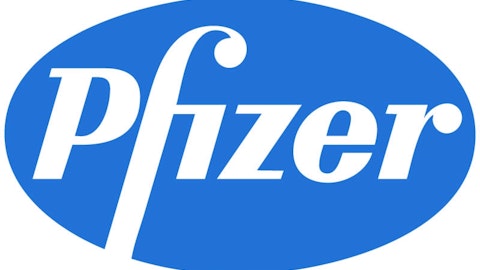Biotechnology stocks offer investors some of the highest potential for returns of any industry. However, these stocks also come with incredible risk that can cause share prices to rise and fall because of binary events. This is especially true for small-cap biotech stocks, particularly in the cancer space. One biotech stock that appears to be a future winner is Synta Pharmaceuticals Corp. (NASDAQ:SNTA).
Synta Pharmaceuticals Corp. (NASDAQ:SNTA) is a development stage biotechnology company focused on discovering and developing small molecule drugs to treat the most aggressive forms of cancer. The company’s lead anti-cancer drug candidate is ganetespib. The drug has been studied in over 700 patients in more than 20 clinical trials. In pre-clinical models, ganetespib inhibited a molecular chaperone called Hsp90, which is essential to the function of many of the most fundamental drivers of cancer cell growth.
On June 3rd, 2013, Synta Pharmaceuticals Corp. (NASDAQ:SNTA) released its Phase II GALAXY results at the American Society for Clinical Oncology Annual Meeting. The GALAXY trial is a global, randomized trial attempting to evaluate the efficacy and safety of the Hsp90 inhibitor, ganetespib, as a second-line treatment for advanced non-small cell lung cancer. The results seemed to be fairly promising despite the sell off in the share price. The results indicated that there was a 32% increase in survival compared to those who were only given docetaxel (the standard chemotherapy for cancer). These results further substantiate the interim results of the Phase II GALAXY trial released on Sept. 29, 2012. Those results showed good tolerability for the combination of ganetespib and docetaxel, as well as meaningful improvements in overall survival compared to those patients receiving docetaxel alone.
Despite what seemed like positive news, Synta Pharmaceuticals Corp. (NASDAQ:SNTA)’s share price saw a large fall of approximately 33%. BMO analyst Jim Birchenough stated that while the risk of death and disease progression appears positive for ganestespib, the difference in patient deaths is relatively small. He advises investors to wait for further details on Phase III before adding to an investment. Still it’s hard to argue with the overall results of the trial, especially one telling statistic. Patients whose cancer was diagnosed six months or more before the start of the study saw an overall survival improvement of 10.7 months, compared to just 6.4 months with the standard treatment. That is significant and seems to present a buying opportunity with Monday’s dramatic sell off.
I believe that Synta will be a winner for a variety of reasons. First, the hazard ratio for the preliminary data was .688. Essentially, that means that there was a 31.2% reduction in mortality rates because of the combination of ganetespib and docetaxel. Second, for a start-up biotech, cash is one of the most important areas to look at. Since their burn rates are typically very high, having enough cash to sustain the business is extremely important. Synta has certainly done a great job of growing their cash pile. At the end of 2011, Synta’s cash was $30.1 million. At the end of 2012, the cash available had increased to $81.5 million. Third, the company’s CEO, Safi Bahcall, stated that Synta could seek FDA approval within 2 years, if Phase III shows similar results to Phase II.
It’s important to understand the potential market size for Synta Pharmaceuticals Corp. (NASDAQ:SNTA)’s drug. Lung cancer is the leading cause of cancer death in both men and women. Synta’s drug, ganestespib, would target non-small cell lung adenocarcinoma, which is the most common form of lung cancer. Ganestespib could be the first new drug for the disease in almost a decade.
And while all of the above appears to have Synta Pharmaceuticals Corp. (NASDAQ:SNTA) sitting in a great position, understanding the risks is critical. The biggest risk is certainly the current Phase III trial that the company is attempting to complete. If the end result is disappointing, the share price will likely fall below $2 and likely much lower. A second risk is from competition. There are two main competitors that own drugs that are used as second line treatments for patients with advanced forms of non-small cell lung cancer. The first company is Eli Lilly & Co. (NYSE:LLY) which owns a product called Alimta. The second company is Sanofi SA (ADR) (NYSE:SNY) which owns a product called Taxotere.




